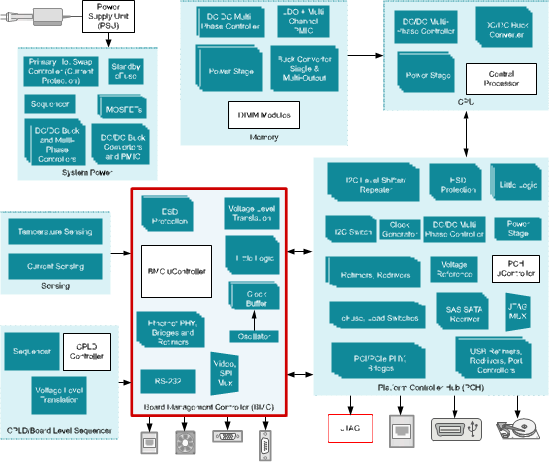SCEA065B November 2018 – March 2021 SN74AVC4T774 , SN74AXC1T45 , SN74AXC4T245 , SN74AXC4T774 , SN74AXC8T245 , SN74AXC8T245-Q1 , SN74AXCH1T45 , SN74AXCH4T245 , SN74AXCH8T245
2.4.1 JTAG Applications
JTAG is an industry standard for testing PCBs and Integrated circuits, as well as programming many FPGAs. The ability to run boundary scan tests, program, and debug makes JTAG essential across development, production, and deployments. Because of this, JTAG ports are found on microprocessors and JTAG headers are found on many PCBs across every market.
In enterprise computing, JTAG headers are commonly found in Rack servers. JTAG is essential in this application as many servers require periodic diagnostic maintenance. Having a JTAG port available on servers enable the technicians and engineers to quickly debug issues during maintenance.
 Figure 2-11 JTAG in Rack Servers
Figure 2-11 JTAG in Rack Servers